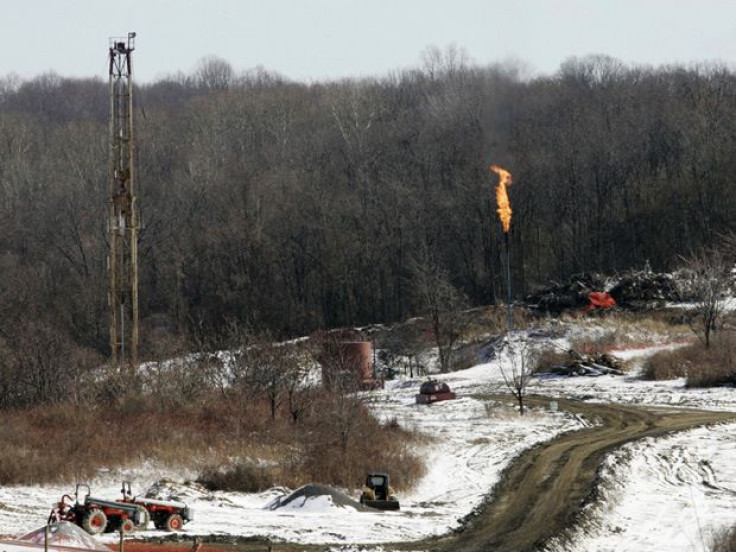Is Fracking Safe? Unpublished NY State Health Dept Report Says Yes

The New York State Health Department said in an unpublished document written early in 2012 that the controversial gas drilling practice of hydraulic fracturing, or fracking, can be done safely if state environmental agencies take precautions.
Various news outlets obtained a copy of the report from an unnamed source. The New York Times said it received its copy from “an expert who did not believe [the report] should be kept secret.”
New York Department of Environmental Conservation spokesperson Emily DeSantis told the Times that the report circulating in the media is out of date and does not reflect official policy.
The report outlines health risks to New Yorkers associated with fracking, including possible contamination of drinking water and radium exposure. But New York’s Department of Environmental Conservation can take measures that will minimize any risks, the report says, according to public radio station WNYC.
"This draft review shows what has already been confirmed by over a dozen state regulatory agencies and officials in three separate presidential administrations,” John Krohn, the spokesperson for oil and gas industry group Energy In Depth said in an email on Thursday. “Hydraulic fracturing can, and is, being done safely each day. This is helping grow our economy, improve our quality of life, and reduce our carbon emissions to levels not reached by any other nation in the world."
Fracking allows companies to extract natural gas from layers of shale rock deep underground. Accessing the gas requires pumping water, sand and chemicals into the rock.
Opponents of fracking are concerned about the risks that the process poses to both the environment and human health, since the exact composition of fracking fluid is often a trade secret. Fracking has also been linked to earthquakes.
There is evidence to suggest that fracking can lead to groundwater contamination, including a recent U.S. Geological Survey study that found chemical signatures consistent with fracking fluids in wells around the town of Pavilion, Wyo. But critics have argued that the study is flawed. One opinion column published in the Wall Street Journal Tuesday suggested that the chemical traces found by the USGS could have come from laboratory contamination, cement or the paint on instruments used to catch sand in the EPA’s wells.
A report from the University of Texas at Austin released in February said that when properly performed, fracking poses little risk to the water supply. But this study was soon mired in accusations of conflict of interest after it was discovered that lead author Charles Groat failed to disclose that he holds shares in the Plains Exploration & Production Company, an oil and gas outfit in Houston.
Not all fracking is alike. Groundwater contamination “is less likely, for instance, in regions where the gas is very deep in the ground, such as in Pennsylvania, where production takes place at depths of 1,500 meters or more,” reporter Jeff Tollefson wrote in Scientific American in October.
New York Governor Andrew Cuomo has long delayed making a decision on fracking, as he is caught between environmental concerns and business interests. Fracking could bring jobs to the economically depressed regions of upstate New York, as it has to Pennsylvania. In November, the governor confirmed that the state would again fail to finish its review of fracking, pushing a decision into 2013.
Fracking opponents have been asking the Cuomo administration for months to release any health impact studies conducted by the state, to no avail.
This newly obtained report “is not a health impact study at all,” Katherine Nadeau, a program director at Environmental Advocates of New York, told the New York Times. “As drafted it is merely a defense or justification as to why the administration didn’t do a rigorous study.”
© Copyright IBTimes 2024. All rights reserved.











